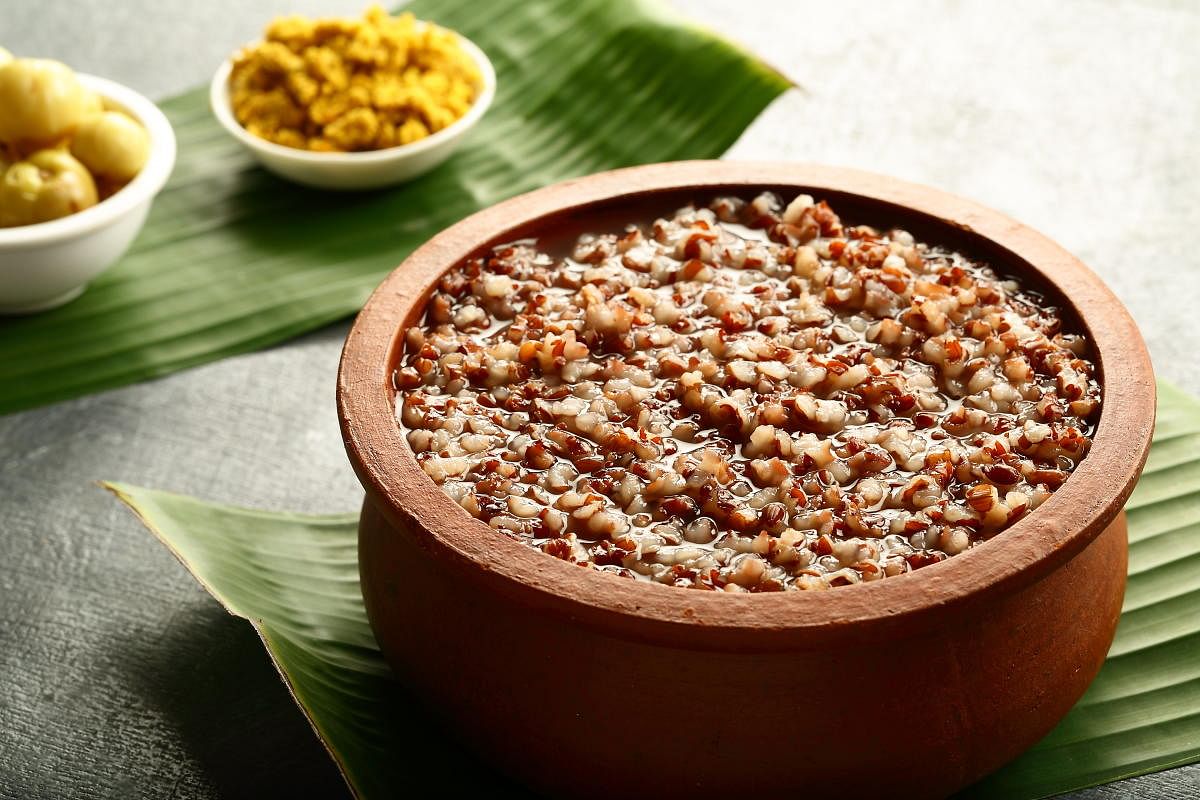
Almost a decade ago, when Chef Akshraj Jodha (Executive Chef, ITC Windsor) began his research with Rajasthani cuisine, he was stuck with a peculiar issue — replicating the taste. Recalls the culinary
custodian, “when you start reviving and standardising traditional recipes, there are a few things that are always challenging: one, the ingredients and two, the taste. For me, it was the latter.”
After several not so successful attempts at replicating the taste, Chef Jodha on a “cook’s hunch” decided to shift to cooking in traditional pots and exchanged his high-pressure burners to chulah. The result, he admits, “was of dawn and day. I had cracked the taste code. It was the pots.”
Incidentally, when it comes to taste and reviving traditional cuisine —even those deemed to be lost —
some of India’s finest chefs swear by the power of using the conventional tools of cooking. And by ‘conventional’, they often mean the pots and pans, and mostly earthen pots that are ‘not artificially colour glazed’.
The thing about using those kiln-fired pots, says Chef Sharad Dewan (Regional Director, Food Production, The Park Hotels), “is that they add value to the dish through its aroma and by allowing the food to breathe instead of reacting. The fact that the clay pot effectively reduces any acidity in food by balancing the pH levels comes as a bonus.”
And that, says Chef Dewan, who has been using unrefined clay pots to cook dishes that need slow mode cooking, “is the secret of why food cooked in a clay pot always tastes better than those made with contemporary utensils, irrespective of how technically advanced they seem to be.
A curious case in point is the mahaprasad made in Jagannath Puri in Odisha. One of the few temples
in India to boast of an ancient kitchen that cooks for millions and never runs out of food, the mahabhog in the temple is cooked in the same earthen pots called kudwa — a large round pot. Made from the unrefined sand sourced from the nearby farmlands, kudwas are the very pots that were
used to cook food on the first day of the temple and continue to be used so. What is so exciting about these old tools of cooking is the sand, the mix and of course the technique of firing it that allows it to withstand high temperatures. Kudwas made in different sizes are used in the Anant Vasudevan Temple kitchen in Odisha as well. Legend has it that it was this second-century temple that popularised the use of kudwas inside temples.
All traditional
What makes these simplistic-looking pots such a culinary wonder? The composition, says Dologobinda Bisnoi, a traditional potter who has been making kudwas for Jagannath Puri temple for the past three generations and is among the few in the Kumarpada (the potters hub) to make pots
the traditional way.
The journey of a kudwa starts with gathering of clay, which is done post-harvest during Daula Purnima. It is the time when farmers usually rest the land before they start ploughing, and the earth within is rich in minerals. Hence mud is collected for an entire year from at least one-foot below the ground. It is here, says Bisnoi, “that the mud is sticky and binds better.”
It is the mixing process, he adds, “that makes kudwa a superior vessel for cooking. Instead of sifting the river sand-mud mixture as it is done for terracotta, for kudwa the clay mix is used as it is. Once the pot is made, it is shadow-dried and then finished by beating the pot which has a leather like consistency.” Once that is complete, the pots are fired and are ready for cooking. The beauty, says seasoned artist Veejayant Dash, “about these pots or the clay pots that are made in this manner, is that these do not need any form of seasoning before cooking in them. In fact, curiously, if the clay mix is not right, the pots can break during the firing process.”
Breathe easy
Both Dash and Bisnoi use a thinner and smaller format of kudwa for home-cooking and consider them best for creating rich-tasting simple food. The thing, says Chef Jodha, “to remember most while cooking with clay pots is that they take time to heat up, but once done, it can retain heat really well and also disperses it really gently. This technique ensures that the food in a clay pot remains moist and can cook really well, especially in case of the meat, the slow movement and circulation of heat can result in succulent meat in a rich flavoured curry. It’s the same with vegetarian dishes like korma that need slow brewing of the flavours.”
Thanks to its make, adds Chef Dewan, “clay pots do not need much oil or fat to cook, but that isn’t the case of one size fits all and so careful selection of pots comes in handy. So if you are cooking something where you plan to retain much of the flavours and aroma, for instance, try one with a close mouth, while for others like rice, fish curry and such, a wider mouth works just as fine.”
And always give the pot at least a day to breathe by soaking it in water or rice water for 20 minutes. This, say the chefs, “will help clean the pot of any remnants of clay and also ensures that the pores open up so that the food doesn’t dry up.”
In case of kudwa, adds Dash, “go for one that is unglazed, and give it a good wash before cooking.”